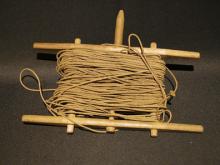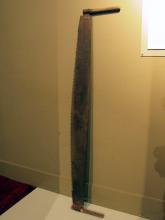An Extractive Economy and an Industrial Economy
Like many developing economies, Penobscot Bay began its growth as an extractive economyExtractive economy
A resource-based economy, dependent on harvesting or extracting natural resources for sale or trade., harvesting and exporting resources with little or no processing.
In the seventeenth century, the primary extractive activity was fishing. Island fishing communities, close to the fishing grounds, developed on Monhegan, Matinicus, Isle au Haut, Deer Isle, and Vinalhaven.
In 1609, Henry HudsonHudson, Henry Henry Hudson
c.1570-c.1611. English explorer and navigator. His three exploration voyages were attempts to find a Northwest passage to China.
Read More used a Penobscot Bay white pineWhite pine
A fast-growing pine tree with white wood and smooth gray bark. Often used for ships' masts in the past. for a mast for his ship, Half Moon, on his way toward finding what is now the Hudson River. It was a modest beginning to what became Penobscot Bay’s major 19th century extractive industry: cutting and shipping trees.
An industrial economyIndustrial economy
An economy that sustains itself by processing raw materials or resources into manufactured items. processes natural resources with machinery (requiring capital) and labor. Although sawing lumber, cutting granite, and making lime did require capital for intensive natural resource processing, the end results were not finished products. In Maine, only a few segments produced finished goods: shipbuilding, woolen mills and engine factories at Camden, canneries all around the Bay, and, later, paper mills in Bucksport and Brewer.


